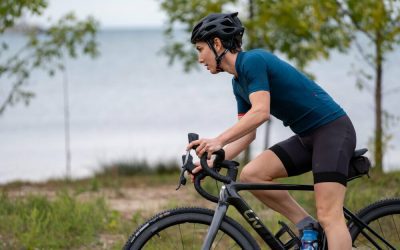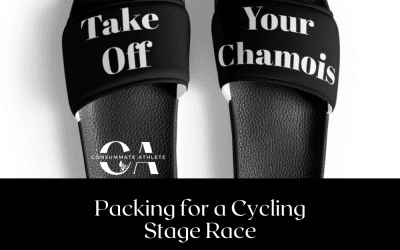When I did a 6-hour trail race on some seriously icy trails, I was forced to figure out running in ice spikes… and that meant that I broke my cardinal rule for race day, the ‘never try new things’ rule that typically, I’m religious about. With the temperatures dropping after some icy rain and snow all week, the course was going to be icy. On Friday during my short warm-up run, I skidded on an icy puddle and crashed myself out. So, Friday night found me screwing ice spikes into my Arc’Teryx Norvan sneakers, ‘just in case.’ I’d gotten the ice spikes the week before, thinking I might use them, but didn’t open the package because frankly, til Friday, I was convinced the sun would come out and I’d be racing in a slushy mess, not on an ice luge. But Friday, I admitted that it might be icy.
Even still, I screwed the spikes into my backup shoes rather than my preferred Nike Trial Pegasus pair, thinking that I’d likely not need them, but I’d have them ready just in case. Well, we got to the race, and even walking to registration clearly showcased the fact that ice spikes weren’t just going to be helpful, they would be necessary. Most people around me had full chains on their shoes, though the speediest looking people (and the most nervous looking people) didn’t. So, off I went to put on the spikes, after slipping and sliding the first 10 meters of the course.
The good: For 37 miles, I never once lost traction despite changing conditions and seriously slippy ice. Honestly, I was amazed at how well they bit into the super slick ice. And a lot of people were going down. I had one guy crash twice in front of me as he sprinted through his 5K (the 6-hour lapped a 5K course over and over and over again!). The people who had chains definitely had better traction on the super icy sections, but because not all of the course was covered, it was definitely overkill to wear the chains the entire lap. The tiny ice spikes (8 per shoe) were the perfect compromise.
The bad: The best part about the Norvans is how flexible the sole feels. I’ve run a few trail marathons in them at this point, and they’re really comfy. However, this was more of a problem with the spikes in them. The sole actually compresses really well, but the problem was that the points that had spikes in them turned into hot spots on my feet by hour 3. I’ve never had blister issues or hot spots in these shoes, but I got some of the worst blisters of my life during this race. The hot spots on the edges of my feet lasted a solid 2 days post-race. They’re fine now, but the pressure of the spikes was a lot after a few hours. I’d use them again, for sure, but would have maybe swapped the shoes I was using with them.
The lesson: Look for thicker soled sneakers to use if screwing in ice spikes… and ideally, use a pair of trail shoes that you’ve already broken in pretty well. I’d honestly recommend this over using a rubber thing that pulls over your sneakers—the little screws seem to get better traction and were less likely to mess up my run by falling off!
Unrelated winter running tip: Winter running in negative temps = frozen hose in hydration packs! I actually started the race with my Kitsbow merino hoodie over my Osprey hydration vest for 3 laps before swapping to one of Peter’s cycling vests (for more space) over the pack, and that little layer prevented my nozzle and water from freezing, even in 10 F temps!

A few ice spike tips for winter running:
Screw ice spikes in between lugs, not on them
If you’re using spikes with trail shoes, I highly recommend opting for these, especially on mixed condition surfaces, rather than using the chains that strap on. The nice thing with these is that I fastened them between the lugs of my shoes, so I still had trail traction on the non-icy parts. I definitely saw a major advantage compared to the people who were trying to move quickly over trails with the full chains on. Sure, I was maybe a bit less tractioned on the ice itself, but these spikes really do bite in and keep you steady!
Think about your stride
I’m not a heel striker, so I actually put more spikes in the heels—that sounds counterintuitive, but I figured if I needed the spikes for icy sections, I would be going slower and dropping my heel anyway. But when I could speed up, I wanted to have as little tapping around in the front as possible.
Choose the right shoes
Looking back, I definitely should have screwed the spikes into my Pegasus shoes. Their sole is definitely thicker, as well as less bendy and compressive than my Norvans, and I think I would have had less hot-spot issues.
Try them before you race!
I don’t know that I would have anticipated the hot spots and blisters even if I had been using them beforehand, since they weren’t an issue til 3 hours in, but nonetheless, let’s get back to my golden rule of never doing something new on race day!
Check in on your why
Peter actually has a great point about spikes: They’re great for getting out some days, and were really helpful in a racing context, but that said… it’s always worth asking if there’s something else you could do instead of kitting out your shoes for a run that requires hardware. Could you ski, snowshoe, walk, yoga, strength train, etc. instead? Maybe you don’t need to run every single day!






